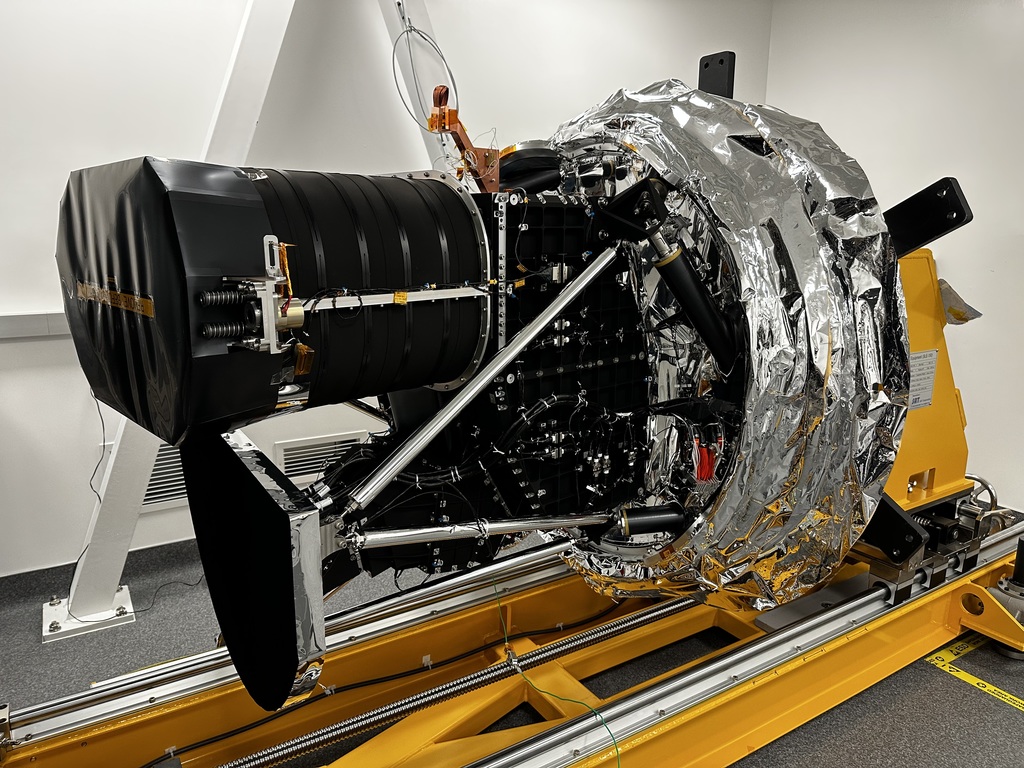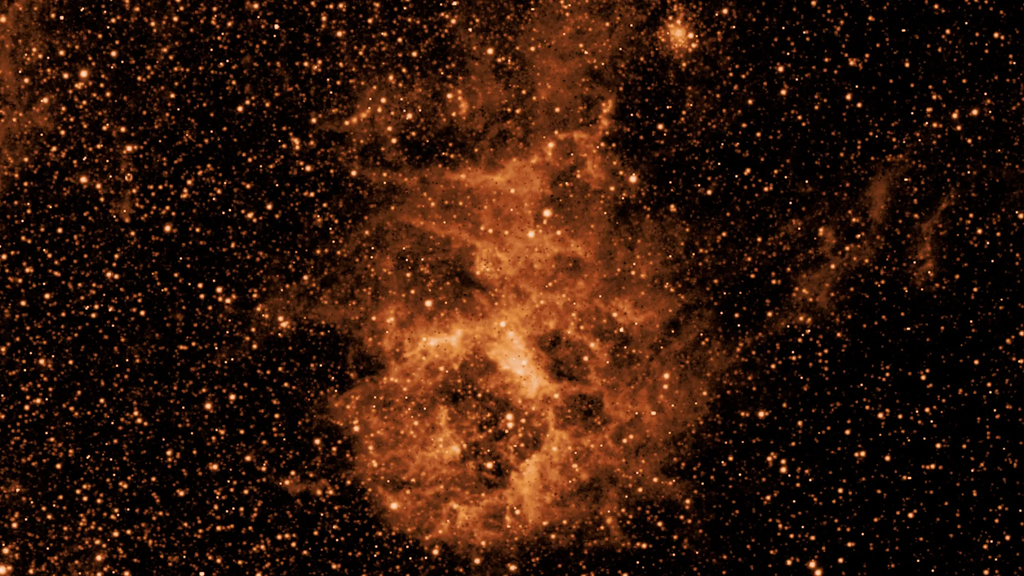System Level Testing of the SPHEREx Instrument Completed Successfully
For the past year and change, a concerted effort has been underway in the SPHEREx Optics Integration and Test Lab at Caltech leading to the completion of the first round of system level testing of the SPHEREx flight instrument - detector assemblies, mirrors, and the thermal control system. The test was conducted in a large custom-made thermal vacuum chamber (watch its dramatic arrival at Caltech) provided by our team members at the Korean Astronomy and Space Science Institute (KASI).
Having completed a series of subsystem-level tests to separately verify optical, electrical and spectral performance, the assembled instrument was installed into the thermal vacuum chamber on the first of July, 2023, where it underwent integrated system level testing in a flight-like environment.
Thermal vacuum chamber (KASI chamber) with instrument mounted in the inner radiation shield. Cabling shown which connects to the flight detectors and telemetry sensors for temperature and pressure monitoring. Courtesy NASA/JPL-Caltech.
Closed KASI chamber in the lab prior to telescope focus testing. Courtesy NASA/JPL-Caltech.
Over the course of 10 days, the chamber was pumped down to below a micro-Torr (a billionth of atmospheric pressure) and cooled below 60 Kelvin using pulse-tube coolers. Once the chamber reached a space-like environment, an intense 2-week test campaign to measure focus of the telescope followed. Many telescopes have a mechanism to adjust focus when operating in space, but SPHEREx and its "no moving parts philosophy" is a fixed focus instrument. This brings significantly less risk of failed mechanical parts in space, but means that focus must be set correctly in the lab before launch.
The first phase of the iterative focus process was concluded on the 20th of July, 2023. Analysis of the tens of Tbytes of data collected allowed the team to calculate precisely how much movement in the telescope is required to bring it into focus. Currently, adjustments to the detector positions comparable in scale to the width of a human hair are being completed. At that point, the corrected focus will be verified before vibration testing at JPL.
SPHEREx team members seen reflected in the KASI chamber cold-filter window. The window is mounted on the front of the chamber where, just behind the window is the telescope entrance pupil. The window is a half meter diameter piece of pure sapphire coated with gold, which is used to attenuate infrared background present in the lab environment. Clockwise from top: Dr. Stephen Padin, Dr. Phil Korngut, Dr. Chi Nguyen and Dr. Howard Hui. Courtesy NASA/JPL-Caltech.
Future testing
For the rest of 2023, the telescope will undergo a staged set of 3 additional system level tests in the KASI chamber. The next two tests are to optimize focus, while the final test is for spectral calibration. The spectral calibration measurement makes use of a large integrating sphere and Winston cone, both cooled to low temperature, which illuminates the telescope entrance pupil with diffuse monochromatic light. This unique method allows us to measure the spectral response of every one of the 24 million pixels SPHEREx’s focal planes.
The KASI chamber, the integrating sphere (gold color) and the Winston cone (silver attachment) were manufactured in Korea. It is seen in this picture with the KASI team: Dr. Yujin Yang, Dr. Young-Soo Jo, Dr. Sung-Joon Park, and Dr. Woong-Seob Jeong (from left to right). Courtesty NASA/JPL-Caltech, KASI.
Recent News
NASA’s SPHEREx Observatory Completes First Cosmic Map Like No Other
Launched in March, NASA’s SPHEREx space telescope has completed its first infrared map of the entire sky in 102 colors. While not visible to the human eye, these 102 infrared wavelengths of light are prevalent in the cosmos, and observing the entire sky this way enables scientists to answer big questions, including how a dramatic event that occurred in the first billionth of a trillionth of a...
Read MoreSPHEREx has made detailed multi-spectral observations of interstellar comet 3I/ATLAS, detecting an abundance of carbon dioxide gas in its coma (the extended gaseous atmosphere of a comet) and water ice in its nucleus. The observations were made between Aug. 7 to Aug. 15, when the object was about 290 million miles (470 million kilometers) from the Sun.
Read MoreNASA’s newest astrophysics space telescope launched in March on a mission to create an all-sky map of the universe. Now settled into low-Earth orbit, SPHEREx (Spectro-Photometer for the History of the Universe, Epoch of Reionization, and Ices Explorer) has begun delivering its sky survey data to a public archive on a weekly basis, allowing anyone to use the data to probe the secrets of the cosmos.
Read MoreBuilding SPHEREx in a Caltech Basement
How a NASA space telescope came together in a university lab
Read MoreAfter weeks of preparation, the space observatory has begun its science mission, taking about 3,600 unique images per day to create a map of the cosmos like no other.
Read More




